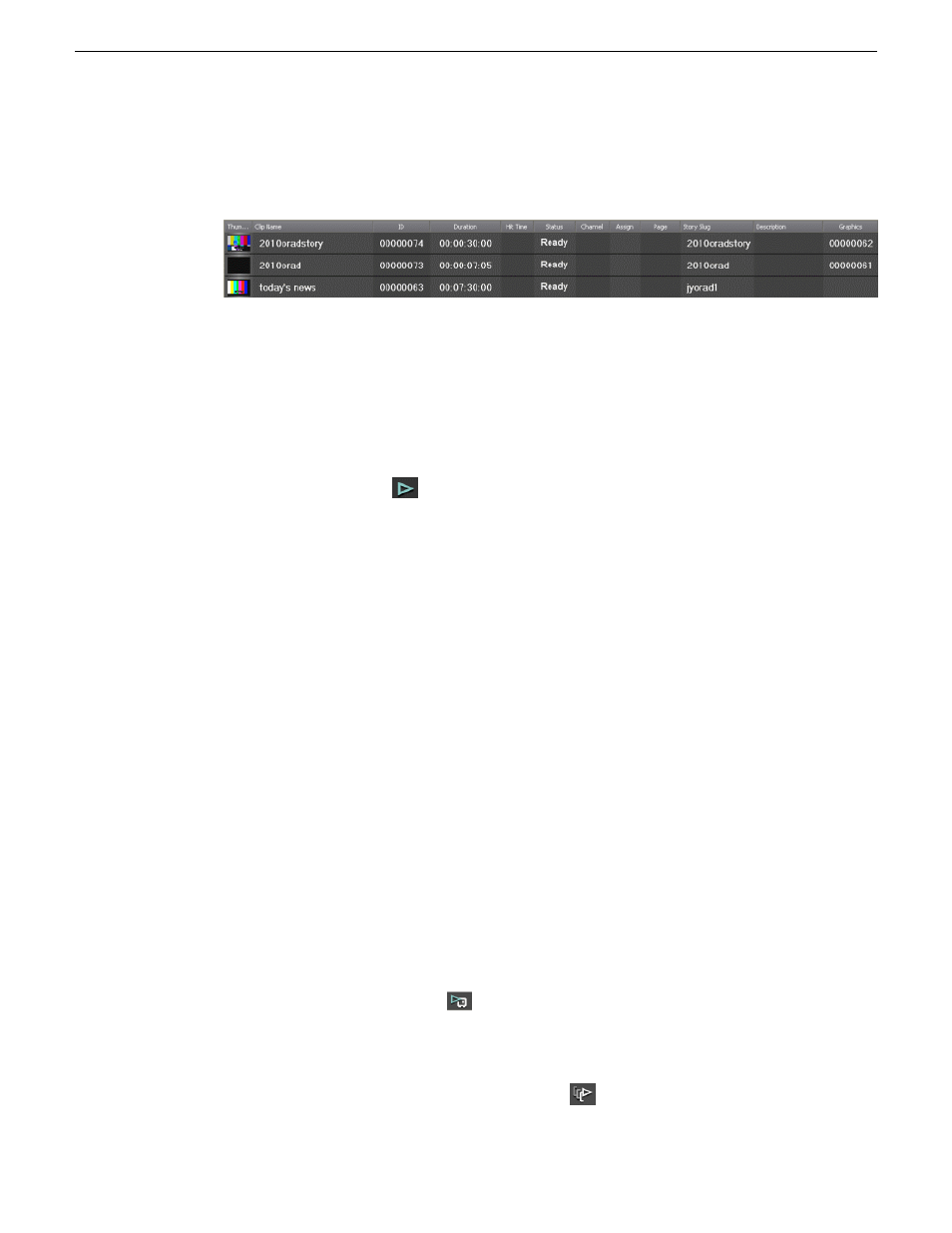Archiving clips – Grass Valley Aurora Playout v.7.0 User Manual
Page 164

On the Aurora Playout playlist, graphic ID can be seen in the Graphics column so
operators can look at a glance to see which story includes graphics.
To play a clip:
•
If not already cued, cue the clip to the desired channel. To cue a clip, drag and drop
it into a channel window.
Clips with Orad graphics contain timing information that will be retrieved by
Aurora Playout.
•
Click the
Play
button
in the channel window.
As the story airs, Aurora Playout triggers these frame accurate graphic elements
through the graphics device for play-to-air.
If you have multiple graphics in your story, each time that a graphic is triggered
and subsequently removed; the graphics column updates the number of graphics
sequence in "n of n" value and displays the graphic ID of the currently playing
graphic.
For Orad events, a second play command will automatically be sent via Aurora
Playout for graphics that have an animated out. This trigger will begin the exit
sequence for the graphic so that it can be removed at the out point of the timeline,
which has been specified by the editor.
Archiving Clips
The Archive Play feature allows you to automatically play all clips in a playlist on a
selected channel and record the output of that channel on a VTR.
You need to create a black clip if you don’t have one.
To configure Archive Play, you must select the archive channel from the Archive Play
configuration tab. You can also change the Archive Black duration on that tab; Aurora
Playout rolls five seconds of black between each archived clip by default.
1. Click the
Archive Play
button
to enable Archive Play.
A message indicating successful connection to the VTR appears.
2. Cue a clip to the archive channel.
Select the first clip and click the
Cue All
button
on the toolbar.
164
Aurora Playout User Guide
14 April 2010
Playing clips to air
